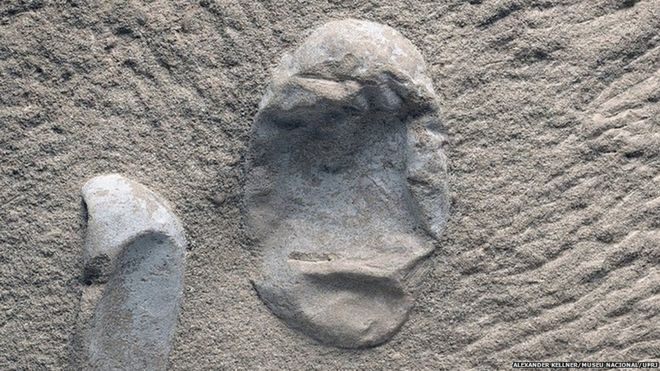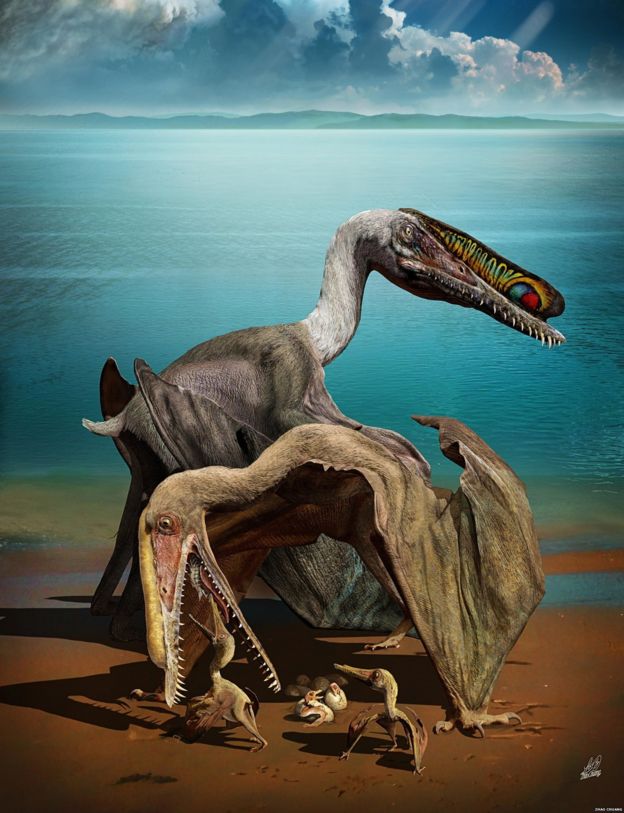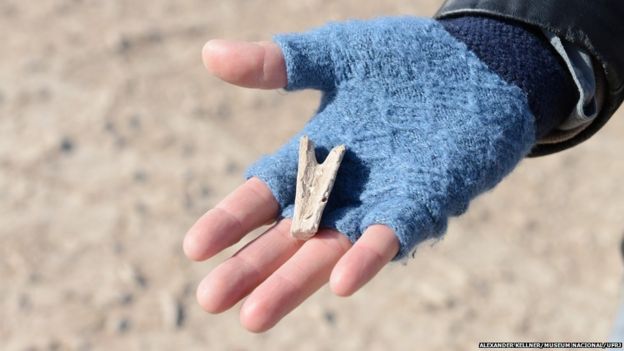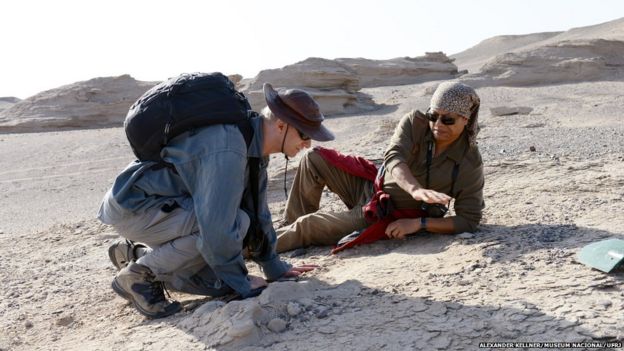Fossilised eggs shed light on reign of pterosaurs
 Image copyrightALEXANDER KELLNER/MUSEU NACIONAL/UFRJ
Image copyrightALEXANDER KELLNER/MUSEU NACIONAL/UFRJThe largest clutch of pterosaurs eggs ever discovered suggests that the extinct flying reptiles may have gathered together in vast colonies to lay their eggs.
More than 200 eggs were discovered at one location in China.
Little is known about how the pterosaurs reproduced.
The find suggests that hatchlings were probably incapable of flight when they emerged from the egg, and needed some parental care.
Predator attack
Fossilised pterosaur eggs and embryos are extremely rare. Until now only a handful of eggs have been found, in Argentina and north-western China.
The large collection of eggs suggests pterosaurs may have nested in colonies, where they defended their offspring from predator attack.
 Image copyrightZHAO CHUANG
Image copyrightZHAO CHUANGPterosaur experts Xiaolin Wang of the Institute of Vertebrate Palaeontology and Paleoanthropology in Beijing and Alexander Kellner of the National Museum of Brazil in Rio de Janeiro discovered the fossils.
The 215-plus eggs could not have been laid by the same female, said Dr Kellner.
An almost complete skeleton of a hatchling shows that bones related to flight were less developed than bones of the hind limb, indicating that newborns might have been able to walk but not fly.
”That implies some parental help was needed for the hatchlings,” he told BBC News.
‘Crucial advance’
They will continue to search for new fossils, he added, to try to get a more detailed understanding of ”the first vertebrates that conquered the air some 225 million years ago and that went extinct, without leaving any descendants some 66 million years ago”.
 Image copyrightALEXANDER KELLNER/MUSEUM NACIONAL/UFRJ
Image copyrightALEXANDER KELLNER/MUSEUM NACIONAL/UFRJ Image copyrightALEXANDER KELLNER/MUSEUM NACIONAL/UFRJ
Image copyrightALEXANDER KELLNER/MUSEUM NACIONAL/UFRJThe eggs belong to a pterosaur species known as Hamipterus tianshanensis, which was first discovered in 2005 in the Turpan-Hami Basin of north-western China.
Geological evidence suggests large numbers of the flying reptiles died in a storm in the Early Cretaceous period, about 120 million years ago.
Commenting on the research, Charles Deeming of the University of Lincoln, said it raised many questions, such as how many eggs were laid at a time.
”The work is a crucial advance in understanding pterosaur reproduction,” Dr Deeming said.
”Hopefully additional finds of equally spectacular fossils will help us answer such questions for pterosaurs and allow us to paint an increasingly complete picture of reproduction in these extinct species.”
The research is published in the journal, Science.












